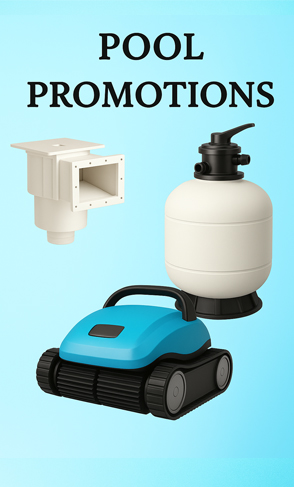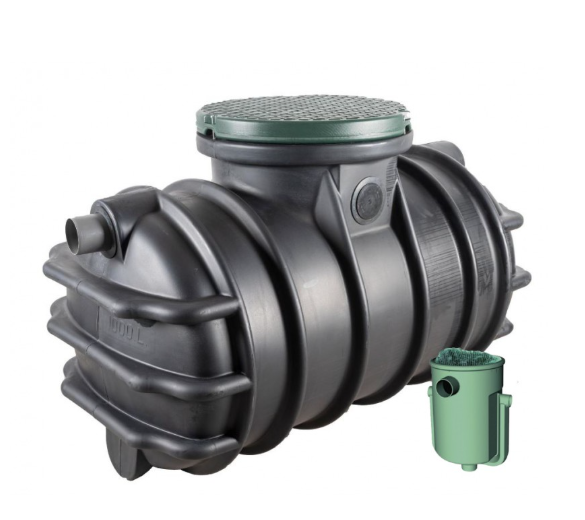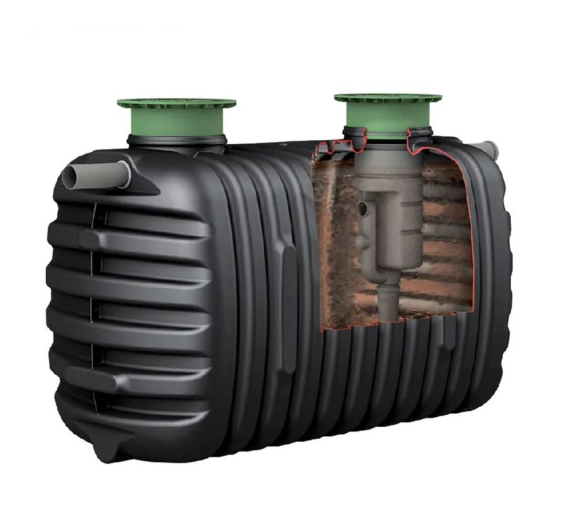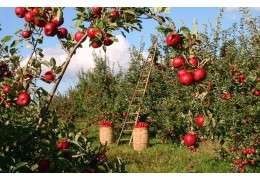Septic Tank: Complete Guide to Installation, Capacity, and Pricing
He septic tank It is a common solution for wastewater treatment in rural areas or where there is no connection to the sewage system. It is a basic but efficient sanitation system that allows for the safe separation and treatment of sewage. This type of system is essential for maintaining proper sanitary conditions and preventing contamination of soil and water sources.
Installing a suitable septic tank requires considering factors such as the terrain, the number of users, local regulations, and, of course, the available budget. Throughout this article, we will analyze aspects such as septic tank installation, the different types and capacities available, and also how much one can cost septic tank price current on the market.
What is a septic tank and why is it essential?
He septic tank It is a buried, airtight structure, usually made of concrete, plastic, or fiberglass, where wastewater from homes or buildings is deposited. It works by separating solids, which settle to the bottom, while liquids filter through or disperse into the ground.
This system is essential in areas without public sewage services, allowing for controlled waste management. In addition to preventing unpleasant odors and sources of infection, it reduces the environmental impact. To achieve this, regular maintenance is essential to prevent system blockages or contaminating leaks.
Process and requirements for septic tank installation
The septic tank installation It must be carried out under certain technical conditions to ensure its effectiveness and durability. The first step is to conduct a soil study, since not all soils allow for adequate filtration. Clay soils, for example, can make it difficult to disperse treated liquids.
The type of septic tank and its capacity are then selected, taking into account the number of people living in the home. The ground is then excavated, the septic tank is installed, and the inlet and outlet pipes are connected. Finally, the system is sealed and tested before use.
Local permits and regulations
To carry out the septic tank installation, Municipal or environmental permits are often required, depending on the region. Authorities also often require a professionally approved design, especially in ecologically protected areas or near water sources.
It's important to maintain minimum distances between the well and drinking water wells, as well as other buildings. Ignoring these regulations can not only result in fines, but also risks to health and the environment. It's always recommended to hire sanitation experts to ensure a safe and legally compliant installation.
Choosing the Right Size
One of the key factors in the septic tank installation It's the correct choice of capacity. This will depend on the number of people using the system and the type of use (residential or commercial). There are pits for 2 people and larger systems for 20 or more, depending on the volume of wastewater generated.
An average domestic septic tank typically has a capacity of between 1,000 and 3,000 liters. However, if the use is more intensive or if the building has several bathrooms, installing a larger system is recommended to prevent collapses or overflows. Modular systems that allow for future expansion are also available.

How much does a septic tank cost: price according to type and size
He septic tank price It varies considerably depending on the material, capacity, brand, and region. Prefabricated plastic models are the most economical, while reinforced concrete models require a larger initial investment, although they are more durable.
On average, a plastic septic tank for a small home can cost between $770 and $903 USD, not including installation. Concrete models can range from $800 to $1,500 USD, depending on their size and structural characteristics. Add to this the costs of labor, excavation, plumbing, and permits. At The Garden Store, we offer easy-to-install models:
| Model | Capacity (liters) | People | Price (EUR) |
|---|---|---|---|
| Septic tank with biological filter | 600 | 1 to 2 | €771.02 |
| Septic tank with biological filter | 1000 | 1 to 3 | €797.60 |
| Septic tank with biological filter | 1600 | 2 to 5 | €888.92 |
| Septic tank with biological filter | 2000 | 3 to 8 | €903.95 |
| Septic tank with biological filter | 2700 | 5 to 9 | €1,651.85 |
| Septic tank with biological filter | 3000 | 5 to 11 | €1,111.00 |
| Septic tank with biological filter | 3750 | 9 to 12 | €2,079.55 |
| Septic tank with biological filter | 4800 | 12 to 16 | €2,138.50 |
| Septic tank with biological filter | 6500 | 16 to 26 | €2,588.16 |
Benefits of having a good septic tank installation
A correct one septic tank installation It offers multiple benefits, both health-wise and economically. It prevents the accumulation of sewage, reduces the risk of infectious diseases, and keeps the environment free of unpleasant odors. It also minimizes contamination of the soil and nearby water bodies.
In addition, a well-installed and maintained septic tankcan last for several decades without the need for replacement. This type of initial investment pays for itself over time, as it reduces the need for frequent maintenance and avoids legal or environmental issues.
System maintenance and cleaning
Although the system is designed to operate autonomously, it is essential to empty it periodically, generally every two or three years, depending on usage. Sludge buildup at the bottom can clog pipes and reduce the septic tank's efficiency if not removed promptly.
It's also recommended to avoid pouring grease, chemicals, or solid materials that could damage the system or disrupt the biological processes occurring within the tank. Proper maintenance prevents costly repairs and prolongs the system's lifespan.
Most common types of septic tanks and their applications
He septic tank Septic tanks can be classified into several categories based on their design and technology. The simplest type is the traditional single-chamber septic tank, suitable for small homes. There are also dual-chamber models that allow for better separation of waste and liquids.
The most advanced systems include secondary treatment with biofilters or specialized drainage zones. These are ideal for country houses, rural hotels, or facilities with high traffic. The choice of system will depend on the intended use, available land, and budget.
Septic tank vs. biodigester
A modern alternative to the traditional well is the biodigester, which, in addition to treating wastewater, generates biogas as a byproduct. Although more expensive to install, it is beneficial in areas where domestic gas is scarce or expensive. Both systems perform similar functions but differ in technology and maintenance costs.
Compared to a biodigester, a traditional septic tank is more economical and requires less technical knowledge. For this reason, it remains the preferred option in rural areas and low-consumption homes.
When is it time to replace or upgrade your system?
Over time, a septic tank may become obsolete due to home growth or structural failure. If there are frequent unpleasant odors, system overflows, or leaks, it may be necessary to replace or expand the tank. These signs should not be ignored, as they can lead to serious health problems.
Complete system replacement is often necessary if there are internal collapses or if the soil has compacted and no longer allows for proper filtration. In these cases, a technical study is recommended to assess whether it is worth expanding capacity or adopting a more modern system.
Give your home the right sanitation solution
Invest in a good one septic tank installation It's a smart decision that guarantees health, savings, and sustainability. If you're considering this option for your home or business, be sure to carefully evaluate capacity, maintenance, and local regulations. An efficient system can last for decades and effectively protect your environment.
Ready to install your own system? Consult with professionals and request detailed quotes. Choosing the right septic tank is the first step toward a cleaner, safer home.
Comparison between a 1000-liter septic tank and a 3000-liter septic tank
When choosing a wastewater treatment system, one of the most important criteria is the number of people living in the property. Below, we analyze two models of septic tanks with biological filters that fit different family and budget needs, both available at specialized stores.
1000-liter septic tank with filter for small families
The 1000-liter septic tank with filterIt is an efficient option for single-family homes occupied by one or up to three people. This compact model, made of durable polyethylene, features a biological filtration system that allows for initial treatment of domestic wastewater. It is easy to install and has a small footprint, making it easy to place even on small plots.
It is designed with a pre-filtration system that reduces solids buildup and allows for more spaced-out emptying. Thanks to its lightness, it doesn't require heavy machinery for installation, which reduces construction costs. It is a functional solution for those seeking sanitary autonomy without the need for a complex system.
This model is ideal for country houses, small rural residences, or second homes that don't require heavy daily use. Maintenance is simple and can be performed every two or three years, provided use is moderate and non-organic waste is not introduced into the system.
3000-liter septic tank with filter for families of four or more people
On the other hand, the3000 liter septic tank with filter It is designed for homes occupied by five to eleven people. It's a robust option for families with children, multi-family homes, or even small rural accommodations. Its capacity allows for greater waste accumulation and more efficient separation of solids and liquids.
This model includes a CE-certified biological filter, ensuring it meets the treatment standards required by European regulations. Its structural design allows for safe installation in soils of varying characteristics, provided the terrain has been previously assessed. Its resistance to deterioration and ground pressure makes it suitable for intensive use.
With a larger volume, you can extend maintenance intervals, thus reducing long-term operating costs. This septic tank is ideal for homes that require a durable, reliable system that can withstand constant use without compromising performance.
Choose the perfect solution with The Garden Store
In The Garden Shop We understand how important it is to have an efficient, long-lasting sanitation system that's tailored to your real needs. That's why we offer a wide range of septic tanks with biological filters, from compact models ideal for small residences to larger capacity options designed for large families or intensively used homes.
Our products are approved, made with high-strength materials, and ready for easy installation. In addition, all our models are CE certified, ensuring safe operation and compliance with current regulations. Buying from us means receiving quality, technical support, and personalized attention.
Visit our online store, compare specifications, consult our technical sheets, and place your order with complete confidence. If you have any questions, our team will be happy to help you choose the right septic tank for your project.
Make your purchase today and equip your home with the best water purification technology.














Leave a comment